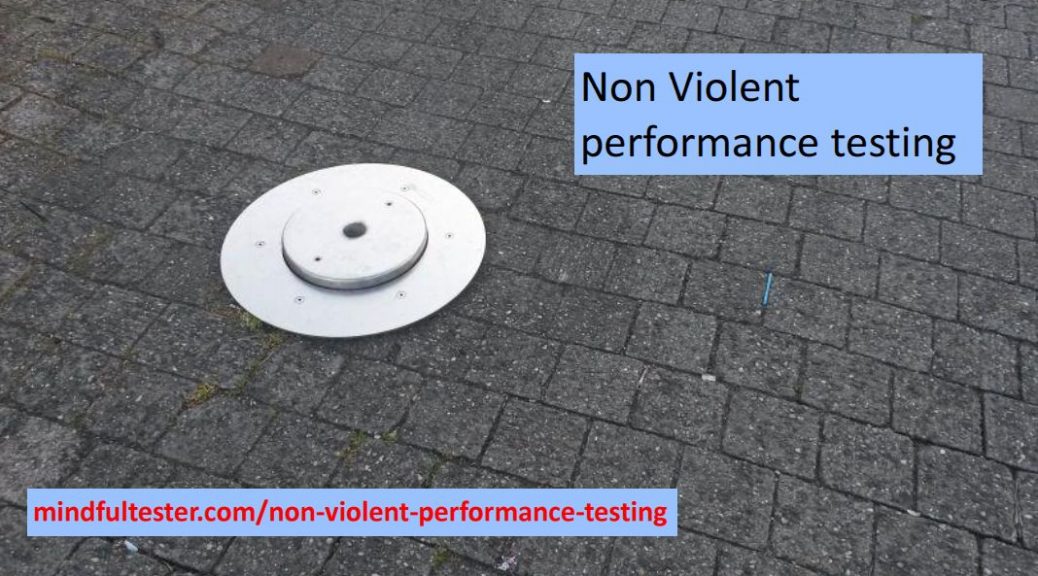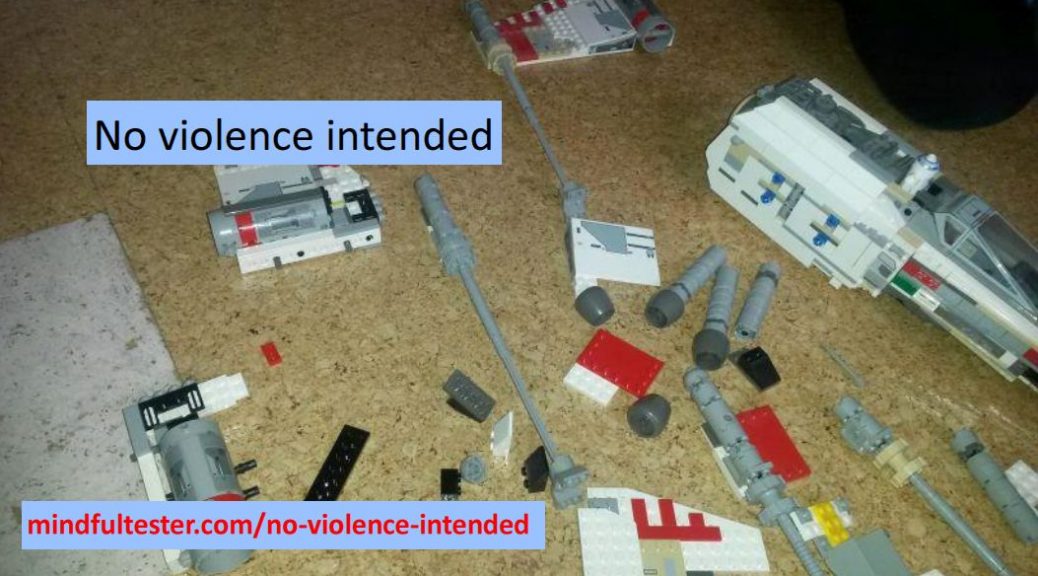A colleague once told about a strange request. Now let me imagine the whole situation.
“Could you perform a performance test tomorrow?”
“If this is an unknown web site it takes 4 weeks: 1 week for test planning, 1 week for scripting, 1 week for execution of the scripts, and 1 week for test rest reporting.
If there are a few minor changes, it takes 2 weeks. If the test scripts and test data do not have to be changed, it will be one week.”
Now imagine the face of the project leader. Poor fellow.
Now I change the request of the project leader.
“I have a web site which must be tested on performance. I am exasperated.
I have a need for participation.
Would you please perform a performance test on my web site tomorrow?”
I used all the elements of the model of Non Violent Communication as described in my previous blog post.
I could add a little more detail.
“The web host provider needs a test report of the web site, that the performance is good. Within 3 days the web site must go live.”
This is a decent request and it is almost impossible to say: No.
Really? I have to fit at least a week of testing in 1 day. It is fair to say that this is not possible. It is not a reasonable request, so it is better to decline.
Then the dance can start. Let me first focus on the need of the project leader.
“I notice that you do not like my answer. Am I right?”
“Yes, you are right.”
“And you have now a need for clarity?”
[after a slow nod]
“I have a need for cooperation.
I am willing to cooperate, but a test plan takes one week.”
Now the dance is focused on the performance tester. It is her or his turn to explain. Almost.
“You extended a cinema web site with an option to order drinks and snacks in advance. It is just one page.”
“Can you not have the computer just click on the page to see what happens? That’s what computers are good at.”
“Would you please let me explain?”
“Yes. Sure.”
“If I would go with 2 friends I would buy three drinks and 3 snacks. Unless it is Monsters Unlimited with the desert scene.
It takes at most 15 clicks for 1 visit.
But there more than 3 visitors for the movie.
Now many people can look to the movie?”
“180. “
“What is the average number of tickets in 1 order?”
“I do not know.”
“Let’s assume it is 2. Then 90 different people will go to the drinks and snack page. So I have 90 sessions for ordering.“
“I can check with marketing and we can go.”
“But those 90 orders are not placed on the same moment.”
At that moment the project leader would look for another performance tester willing to help him.
My colleague had lost a customer. In this case there is no problem.
What happened?
A lot of talking.
“Would you please be more specific?”
“Sure.”
There were needs and feelings mentioned. The performance test coordinator focused on the project leader. And he explained a lot. A lot of talking. But no project though.
It is also possible to focus first on the test coordinator instead of the project leader.
Ready? Set. Speak.
“How can I help you?”
“I talked to my customer. She agreed to postpone the go live date of drink and snack page in the cinema web site.”
“The last time I had not enough time to explain why a performance test takes this long.
I was disgruntled.
I have a need to be understood.
Would you please let me explain, why the performance test takes time?”
More than 5 years ago in my real life I talked with my boss about a performance test. I had calculated that the investment in a performance would be earned back in 3 months. According to some financial standards this is quite good. But budget was too tight. My boss just asked, whether I had signed anything. This was not the case, so he advised to stop.
Other things that happened
A week ago a fellow TestBash speaker wrote a personal story about her needs which were not fulfilled. Poor fellow. There was a lot of emotion in the post. So she quit. And found joy back in little things.
Now you might doubt whether people would really read this story. But there were. Reactions came in. People who were touched by her story. Feelings and needs can be a big + or PLUS in communication.
For the people who are really struggling:
- Describe the situation in an objective way.
- Go to the feelings inventory.
And determine your feeling (watch the flags for other languages available) - Go to the needs inventory.
And determine your need. ([Other languages …] Chinese any one?) - Now formulate your request and make it reasonable.
There are other ways to handle difficult situations. One of my most read blog posts last year was about being fired. I unconsciously used stoicism. My need was clear: a need for support my family. But I had no bad feelings on that moment. I neglected the negative ones.


